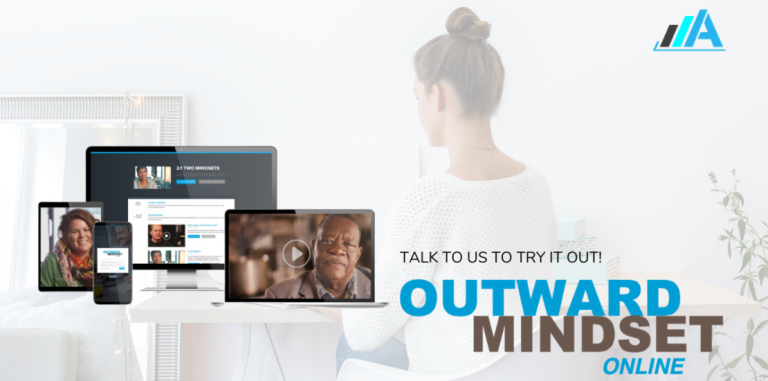
For a learning culture to thrive within a company and result in significant business outcomes, learning and development (L&D) can’t be just an employee benefit. Rather, L&D leaders should position these programs as fueling company strategy and driving the achievement of business goals. These results are best demonstrated through concrete return on investment (ROI).
Metrics long associated with a learning program’s success — like participation and employee satisfaction — don’t paint the full picture of the positive impact of learning on a business, particularly when it comes to quantifiable ROI. A recent study from research firm, IDC, found that customers could realize a three-year ROI of 592% from the initial investment costs in Udemy Business. That’s a compelling figure and this article will look at five of the most common types of business outcomes we’ve seen drive this type of ROI for customers.

5 business outcomes that produce learning ROI
Many commonly measured success metrics for corporate learning programs are difficult to tie directly to business outcomes. For instance, learner engagement rates or learner adoption rates help measure your learning program’s health. But, they don’t necessarily indicate that the program offers a valuable return on investment of the costs and time associated with implementing these programs. For today’s workplace, the following are common types of outcomes that produce meaningful ROI for companies that invest in learning.
1. Reduced costs
While learning programs do require financial investment, a strategic L&D program that targets key company initiatives can help to reduce costs in the long term. For example, companies that opt for online-based learning programs instead of in-person training sessions, can scale development opportunities to all employees without facing the exponential cost increases of onsite training for all employees.
Toyota Tsusho South Pacific Holdings (TTSPH), an automotive company, experienced this when the company switched from offering exlusively in-person learning opportunties to an always-on learning platform. Prior to the COVID-19 pandemic, TTSPH’s L&D programs could only be accessed by request at a regional training center. Employee development needed to continue despite the travel restrictions of the pandemic. “As a company, we run the risk of stagnating or continuing with outdated knowledge and practices if we do not provide staff with a source of updated training on demand,” said Michelle Morell, Learning & Development Operations Manager at TTSPH. The organization pivoted to on-demand learning from Udemy Business, offering employees the flexibility to access learning whenever they needed and wherever they were located. Not only did learning increase during this time, TTSPH is now saving over 50% in L&D expenses per employee by continuing to offer online development opportunities.
2. Increased productivity
When employees get the opportunity to develop critical skills, they work faster and smarter. According to an IDC ROI study, Udemy Business customers were able to upskill substantially more employees than they had through previous approaches to learning, with a 398% increase in the number of employees upskilled with Udemy Business. This led to important gains in employee effectiveness, productivity, and organizational value. Of particular note is the increased productivity that technical teams see when continuous learning and upskilling opportunities are encouraged in the workplace. Digital transformation firm, Publicis Sapient, found that when employee IT certification rates increased by 20%, productivity did as well, with employees completing client projects faster, thanks to their growing expertise.
A boost in productivity brought on by a learning culture isn’t exclusive to seasoned employees. Organizations use learning tools like online courses and learning paths to onboard new employees and help them contribute to company projects faster. Samanta Zanchi, Learning & Development Manager at technology consulting firm OverIT, explains that the company has scaled its global operations thanks to digital onboarding, with managers tailoring new employees’ onboarding learning path with role-related courses and information. “We’ve noticed our new hires are far more productive since we introduced our induction plan using Udemy Business,” Zanchi says. “It’s far easier to onboard in larger numbers.”
3. Higher revenue
Improving your workforce’s productivity directly affects an organization’s growth and competitive advantage. According to IDC, companies that use Udemy Business see an average annual revenue gain of $22.5 million for each organization. By offering employees development opportunities that target in-demand skills or address changing customer needs, companies create a more productive workforce that drives revenue growth.
Valtech, a global business transformation consultancy, initially invested in a new L&D partner to scale its previous learning programs and grow the skills of junior technical employees. By allowing these employees to learn new skills that support evolving customer needs, the company found its revenue was also growing. “We don’t sell physical products — our people, skills, and retained knowledge drive our revenue,” says Christian Haahr `Sigsgaard, Global Learning & Development Director at Valtech. For service-based organizations like Valtech, the end product is the expertise and knowledge of its workforce, so continuous learning is vital to delivering a compelling product.
4. Improved employee retention and experience
Over three-quarters of employees say they’re more likely to stay with a company that offers continuous development opportunities, according to research from Talent LMS. Employees value the investment they see their employers making in their career growth, and acquiring new skills keeps employees engaged and motivated when fulfilling their day-to-day responsibilities. There is a direct ROI benefit to organizations, as well, when they are able to engage and retain employees while helping them upskill to gain the skills needed to fill vacant roles. According to IDC, Udemy Business customers interviewed reduced their net annual costs by $1 million annually by making fewer external hires.
Retaining talent is particularly critical on technical teams, as in-demand skills change fast, and hiring new employees is costly. In fact, for Nutanix, a leader in private cloud, hybrid, and multi-cloud computing software, learning programs play an important role in employee retention. “True validation of success with Udemy came from our Culture Amp Survey,” says Nutanix Engineering Enablement Director Kevin Freitas. “Engineers cited learning opportunities available as one of the top reasons why they would stay at the organization.”
5. Support business continuity
Between the organizational pivots brought on by the pandemic and an already tight labor market exacerbated by the Great Resignation, business continuity is a significant outcome for leaders to tie to their learning programs. Upskilling all employees, not just managers or employees who raise their hands for new challenges, helps a company keep up with the pace of change and compete in a global market. As Ted Cogan, Talent Development Projects Lead at consulting firm Pariveda, explains, by investing in the upskilling of all employees, they can match clients with the best internal fit for their project. “In some cases, if the employee has outgrown the project at hand, we might encourage employees to move to a different project and challenge themselves while still providing the best experience possible to our clients.”
Retaining current employees and preventing the flight of institutional knowledge from a workforce is also a critical component of business continuity. In 2020, a high attrition rate at InnoWave, a global technology and consulting firm, impacted its efficiency and restricted growth. By investing in employee L&D on-demand learning from Udemy Business, InnoWave has seen a 7% reduction in employee attrition and €300,000 saved in recruiting costs created by employee turnover.
Understanding the ROI that learning drives
Developing a long-lasting learning culture that delivers the ROI executives care about isn’t as simple as signing on the dotted line with a new learning provider. Before a new learning program begins, L&D leaders should understand how to drive meaningful impact in support of their company’s overall strategy by understanding the key outcomes and types of ROI that learning programs can produce.
At Udemy Business, we work with customers to evolve their learning programs from one item in a long list of perks and benefits to a strategic initiative that boosts innovation, employee engagement, and growth. Contact us for information on how our customer success team partners with companies to build programs tied to business goals.
Original Article: https://blog.udemy.com/roi-learning-business-outcomes-examples/
Kelly Schwarze, Senior Technical Content Writer, Udemy for Business






